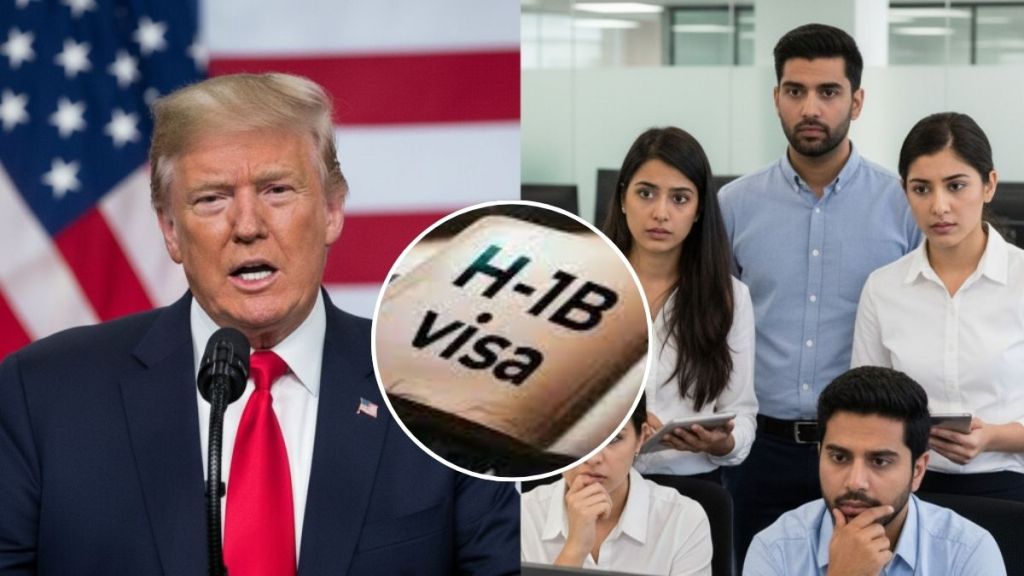For thousands of H-1B visa holders and aspirants, the past few months have been a rollercoaster. In September 2025, the Trump administration stunned the tech and immigrant community by imposing a $100,000 fee on H-1B visa applications.
Given that around 72% of H-1B holders are Indians, followed by Chinese professionals, the decision created widespread concerns in the global tech talent pool.
But there seems to be a sudden shift in his stance. In a recent interview with Fox News host Laura Ingraham, Donald Trump said, “You don’t have certain talents, and people have to learn.”
He further added, “You can’t just say a country is coming in, going to invest $10 billion to build a plant and take people off an unemployment line who haven’t worked in five years and they’re going to start making their missiles. It doesn’t work that way.”
Echoing Trump’s recent shift in tone on skilled immigration, US Treasury Secretary Scott Bessent is also indicating a softer approach.
Speaking in an interview with Fox News, Bessent outlined what he called a “knowledge transfer” strategy. He said it was designed to rebuild key sectors such as US manufacturing, shipbuilding, and semiconductor production, which have suffered from decades of outsourcing.
“Train the US workers. Then go home. Then the US workers fully take over,” Bessent said, capturing the administration’s vision for the new visa framework.
When pressed about concerns that foreign workers might replace American jobs, Bessent was quick to push back. “An American can’t have that job — not yet,” he said. “We haven’t built ships or semiconductors here for years. Overseas partners coming in, teaching American workers — that’s a home run.”
What could be the reason behind Trump’s U-turn?
Trump’s sudden change in stance seems to have several underlying reasons. According to Raymond Vickery, a geopolitical expert who spoke to the Times of India, one key factor could be advice from his Silicon Valley supporters.
“Some of his Silicon Valley supporters should have told him we don’t have an overall unemployment problem in the country. What we have are needs in certain sectors, and we don’t have people to fulfil those needs. I think he has convinced himself,” Vickery explained.
He also mentioned that progress on the India–US trade deal may have influenced this shift.
“My understanding is the India–US trade deal is almost over at a working level, and what has been said should lead to some softening in H-1B, and even the $100k fee will also be revisited, and his point of view is going to trigger MAGA,” he added.
Essentially, the improving trade relations between India and the US and the realisation that America’s job market lacks skilled workers in certain sectors, might have led Trump to reconsider his earlier hardline position.
Meanwhile, Kamal Karanth, co-founder of Xpheno, told Business Standard that “the dependency on migrant knowledge workers is well known in local business circles in the US, and the statement from Trump only endorses it further. While it is not clear what would officially ensue after the latest statement from the President, it is definitely the quintessential light down the tunnel for local and international businesses in the US. ”
Karanth also added, “the other significant beneficiaries of the H1-B programme, including India, the UK, Ireland, and France, will have reason to relax if the official stance of the government shifts. While the statement is welcome as a view, it will gain weight if the H1-B fee hike is officially reconsidered and revised, if not reversed.”
India-US trade deal
As Vickery indicated, India-US trade deal could be a major reason behind this move. In fact, Trump had recently indicated that “very high” tariffs on India would be reduced “at some point” going forward. “
Well, right now the tariffs are very high on India because of the Russian oil,” Trump told reporters at the Oval Office. “And they’ve stopped doing the Russian oil. It’s been reduced very substantially. Yeah, we’re going to be bringing the tariffs down.”
On the flip side, as reported by Fortune, economists have cautioned that the Trump administration’s tough immigration policies could trigger negative net migration, hurting the US labour force and weakening Americans’ overall spending power. Both effects could slow down economic growth.
A recent National Foundation for American Policy study warned that these immigration restrictions could shrink the US workforce by around 15.7 million people and cut GDP growth by nearly one-third over the next decade.
Meanwhile, Trump also struck a strong note when discussing international students, another group that had faced uncertainty under his previous policies. He openly advocated for allowing foreign students to study in American universities, calling them “good” for both business and the country’s higher education system.
Pushing back against hardline voices within the MAGA movement, Trump argued that a drastic cut in international student numbers could devastate US higher education. “You don’t want to cut half of the people, half of the students from all over the world that are coming into our country — destroy our entire university and college system — I don’t want to do that,” he said. “I actually think it’s good to have outside countries. Look, I want to be able to get along with the world,” he added.

